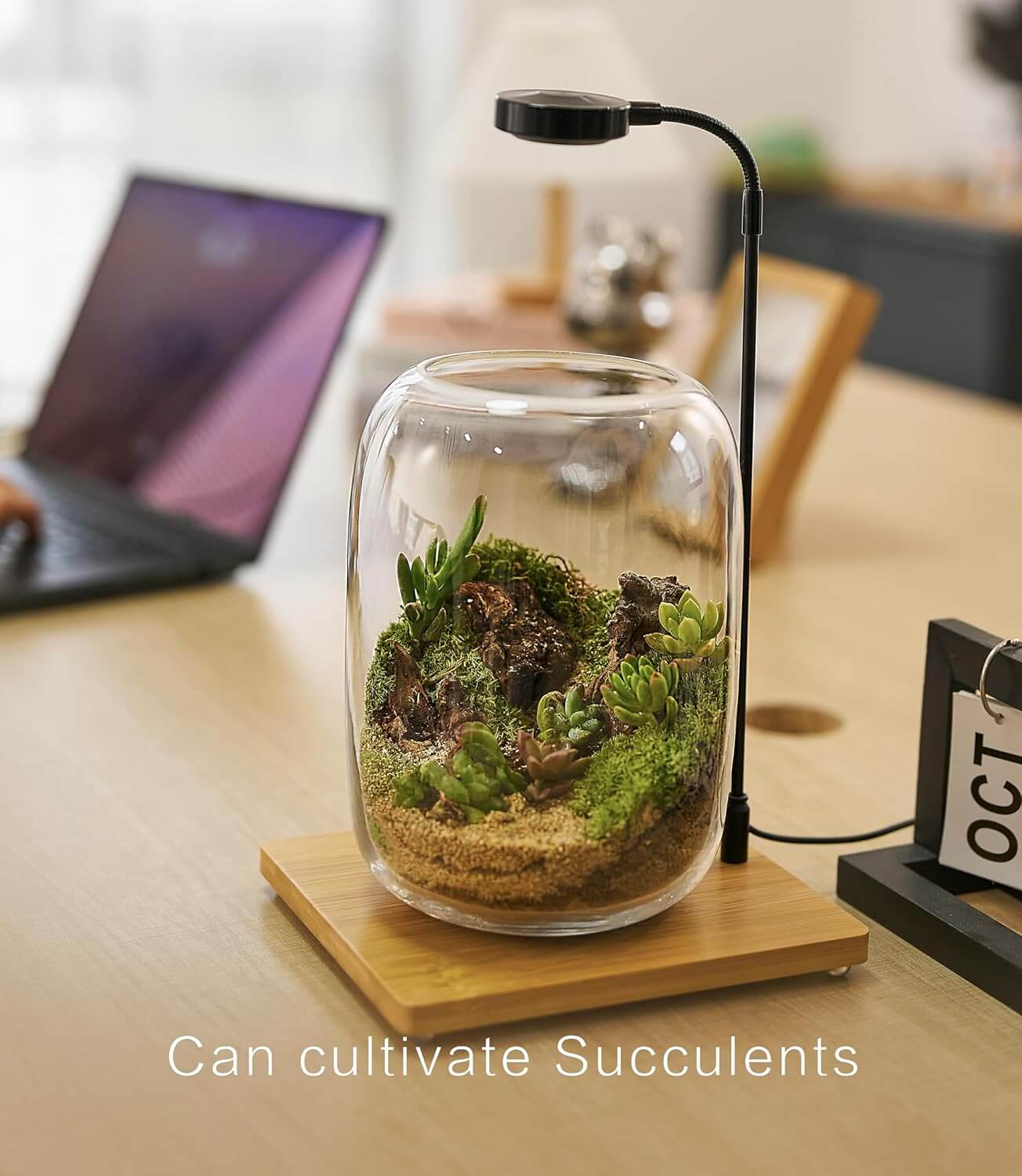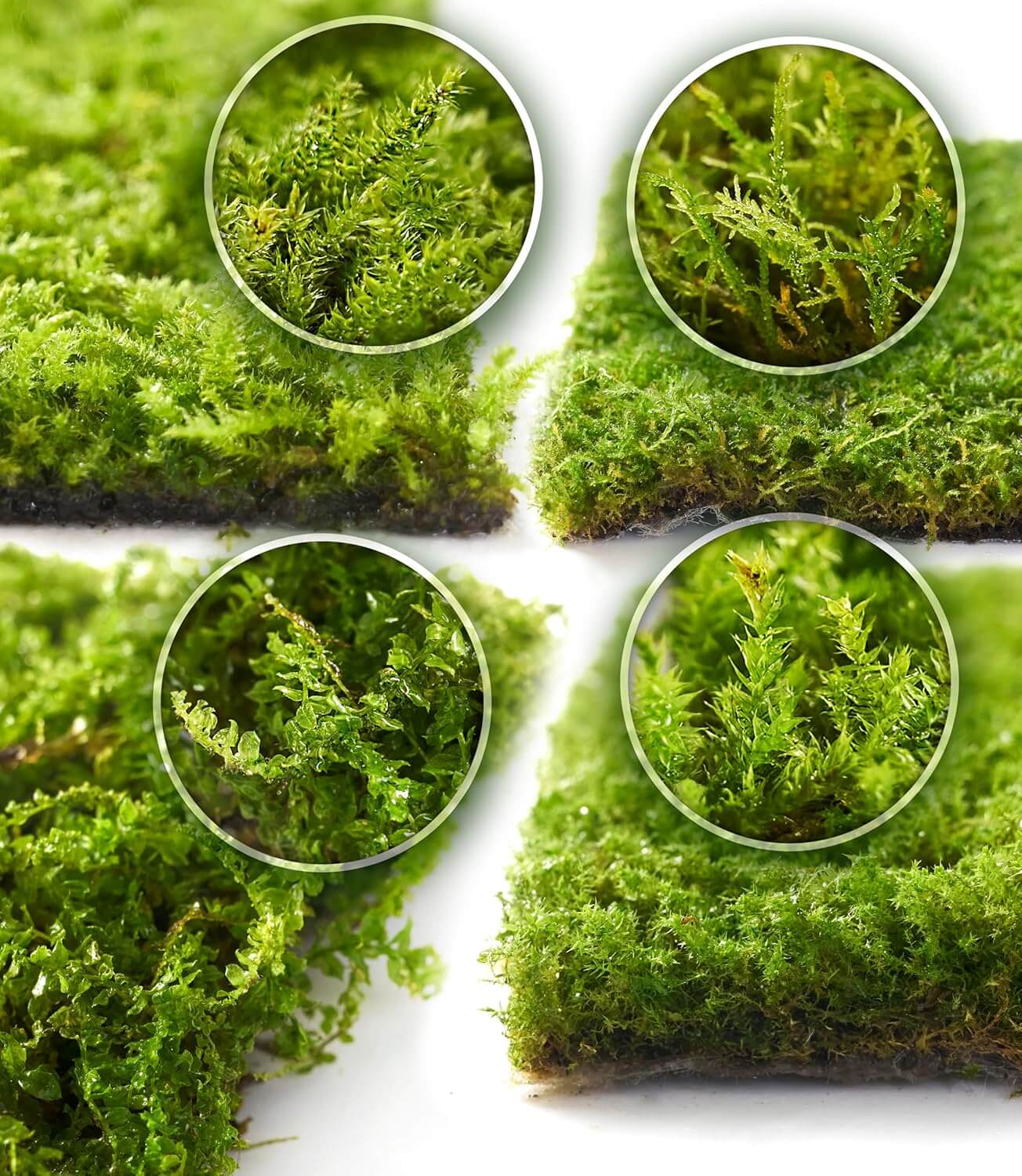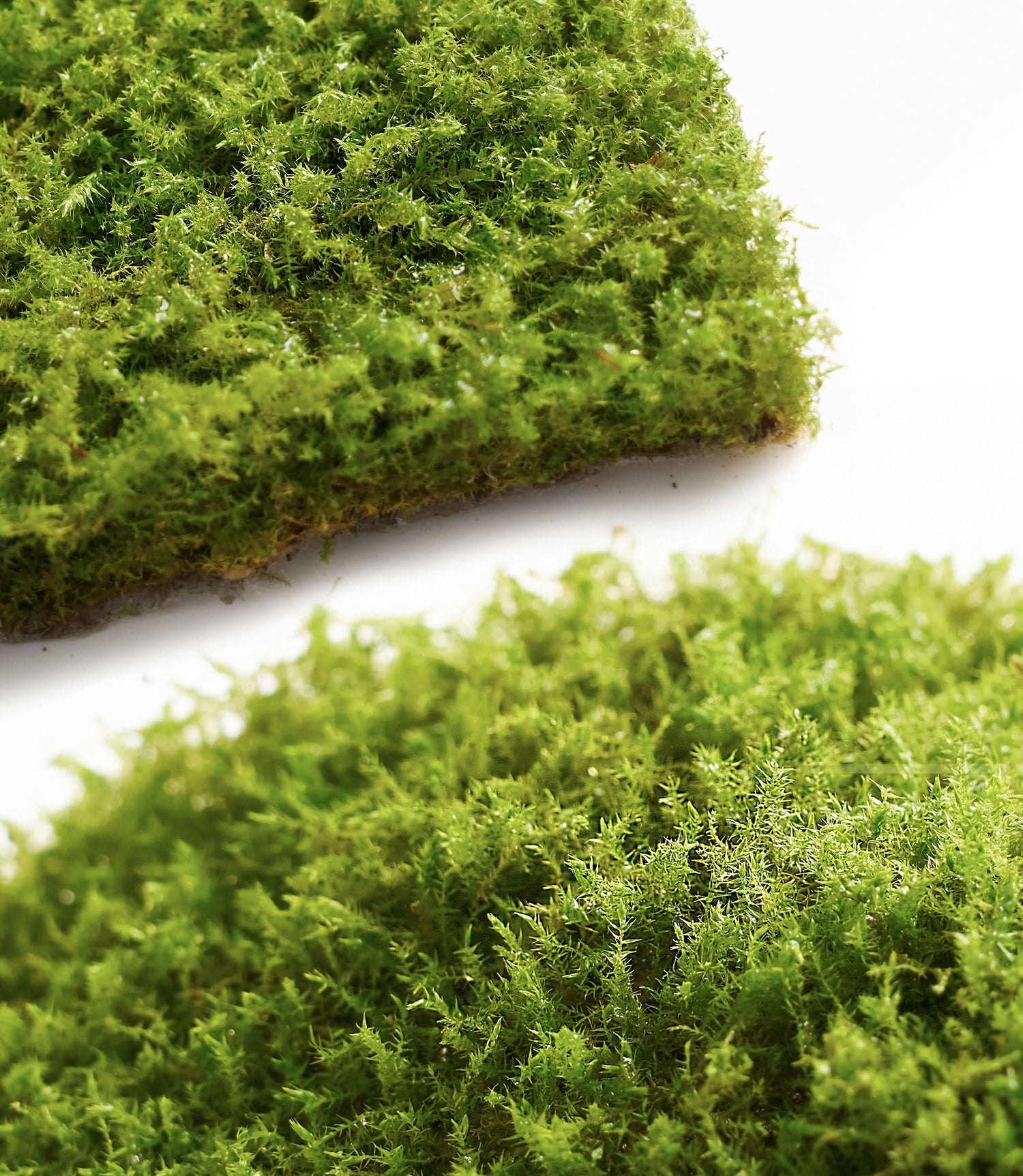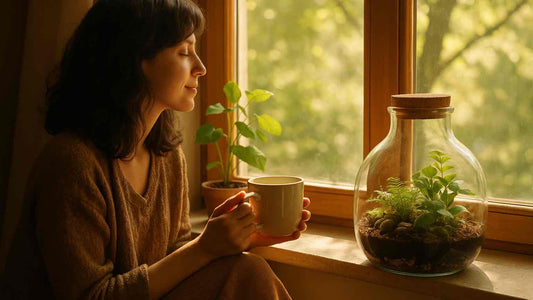How to Care for a Living Moss Bio-Vessel in Winter
Every year when heating season arrives, my moss bio-vessel starts to act up—the leaves curl up, the glass is covered in water droplets, and every few days, a little white mold appears. The first two years were a real struggle. I tried watering regularly, covering it tightly, and moving it around, but the result was either yellowing or mold. Finally, I figured out the trick: the key to keeping moss in winter isn't to water it excessively, but to find the right location and control the temperature and humidity. This article is a summary of my painstaking efforts over the past few years, and I'm sharing it with you.
🌿 My Three Criteria for Moss
- Green enough: At least 70% of the moss should remain vibrant green, not patchy and bald like hair falling out.
- Musty and odorless: Up close, you'll only smell a faint earthy odor, never sour or musty.
- Moisture-dissipating: A little moisture on the glass is fine, but if it persists for a long time, the moss is definitely in trouble.
💧 Winter Watering: Look at the leaves, not the calendar
In summer, due to the high temperatures, you need to water frequently to maintain humidity; in winter, the opposite is true: follow the principle of “small amounts, frequent applications.” Heating can dry out the room, but that doesn't mean you need to spray every day.
- Curling leaves = shortage of water: If leaves curl or feel dry, spray lightly.
- Unfurled leaves = good condition: If leaves are still open and not dry to the touch, leave them alone.
The worst mistake I made was spraying every day for three days. Condensation covered the glass, and mold appeared almost instantly. Now, after spraying, I open the lid for 10–15 minutes to let the moisture dissipate before re-covering it. Since then, mold has almost never appeared.
🌬️ Ventilation: Always air it out after spraying
Sealed eco-bottles are most prone to problems in winter. I used to cover them immediately after spraying, but moisture would hang around all day, and the moss would rot. Now, I open the lid and air it out for 10–15 minutes after spraying. This prevents suffocation in both fully and partially sealed bottles.
If you have a semi-open or open bottle, it’s much easier. You don’t need to spray every day; once every 2–5 days is enough. Air circulation matters more than watering.
For large enclosures or reptile setups, I recommend using a sprayer instead of a dropper. A sprayer distributes moisture evenly, while a dropper easily over-dampens one spot.
☀️ Lighting: Diffused light + fill light is best
During winter, short days and low sun angles cause moss to darken from insufficient light. I once placed a vase in a living room corner, and within two weeks, the moss darkened completely. Later, I switched to a balcony spot with diffused curtain light plus a small 4000–6500K fill light for 8 hours daily—the moss slowly recovered.
Important: Avoid direct sunlight. Even in winter, glass heats quickly, spiking the temperature and burning moss leaves. Diffused light + fill light is the most reliable combo.
🌡️ Temperature: Don’t overheat, don’t freeze
The trickiest spot is the windowsill: hot during the day, freezing at night. Moss goes through temperature swings like a roller coaster, which quickly weakens it. Also avoid heating vents, AC vents, or fireplaces. Last year I left my bottle near a heater, and within three days, the moss curled like hay. The safest option: place it in a stable indoor corner with consistent light and temperature.
📝 My "Weekly 3-Minute Check"
- Check the glass: If droplets linger, you sprayed too much; reduce next time.
- Smell: Sour odor? Ventilate more and turn over the base moss.
- Check the color: Dark olive leaves? Extend fill light by 2 hours.
- Move the bottle: On cold nights, shift it 20 cm inward from windows.
This little habit helps me avoid most problems.
🚫 The 3 most common winter mistakes
- Placing the bottle on a heater vent or between curtain and glass → leads to drying or frost damage.
- Putting it under direct winter sun → glass heats rapidly, burning moss leaves.
- Using tap water daily → leaves white stains, substrate salt buildup, moss weakens.
Reminder: Use distilled or rainwater instead of tap water for healthier moss and cleaner glass.
🧪 Tips for Different Scenarios
- Closed bottles: Mist less, ventilate more; watch condensation to guide watering.
- Semi-open bottles: Mist every 2–5 days, prioritize airflow.
- Open bottles: In dry rooms, use a nearby humidifier but keep RH under 50% to avoid mold.
- Large displays or reptile tanks: Mist instead of drip irrigation; use whole moss in focal spots and fragments in the background.
✅ Summary
Maintaining moss in winter isn’t difficult if you remember:
- Find the right spot and don’t fuss unnecessarily.
- Water as needed, ventilate after spraying.
- Spend 3 minutes weekly checking and adjusting.
With this rhythm, moss stays at least 70% green, mold-free, odor-free, and survives the winter peacefully. My moss has now stayed green for two months straight—the best it’s ever been.
Winter Terrarium Moss — FAQs
Q1: Why does my moss always turn yellow or dark green in the winter?
It’s mostly due to insufficient light. Winter days are short, and while moss tolerates shade, it can’t be without light for long periods. Place it behind a sheer curtain in diffused light. If that’s not enough, supplement with a 4000–6500K low-intensity white light for 8–10 hours daily. Avoid direct sun on glass — it can overheat and burn moss.
Q2: Should I water more in the winter? Isn’t the air very dry?
Don’t water randomly. Mist only when leaves curl and feel dry to the touch. If leaves are unfurled and slightly moist, leave them alone. After spraying, open the lid to ventilate for 10–15 minutes to prevent mold.
Q3: Why is there always condensation on my glass?
Occasional condensation is normal, but if it persists beyond 3 hours, moisture is too high. Mist less next time and always ventilate after spraying. For sealed jars, open the lid daily for ~10 minutes to release humidity.
Q4: Where is the best place to put a moss terrarium?
Away from heat or cold sources (heaters, AC vents, fireplaces) and away from the curtain–window gap. Choose an indoor corner with diffused light plus a supplemental lamp. Keep temperature around 64–68 °F ( 18–20 °C ) — generally stable and comfortable for moss.
Q5: Can I spray with tap water?
Not recommended. Tap water minerals leave white residue on glass and salt buildup in substrate. Over time moss declines. Use distilled or rainwater for brighter leaves and a cleaner jar.
Q6: What weekly inspections should I do?
- Check the glass: if droplets linger too long, reduce mist next time.
- Smell test: sour odor → increase ventilation and inspect the base layer.
- Color check: if it stays dark olive, extend fill-light duration.
- Move the terrarium: on cold nights, shift it ~20 cm indoors from the window.






